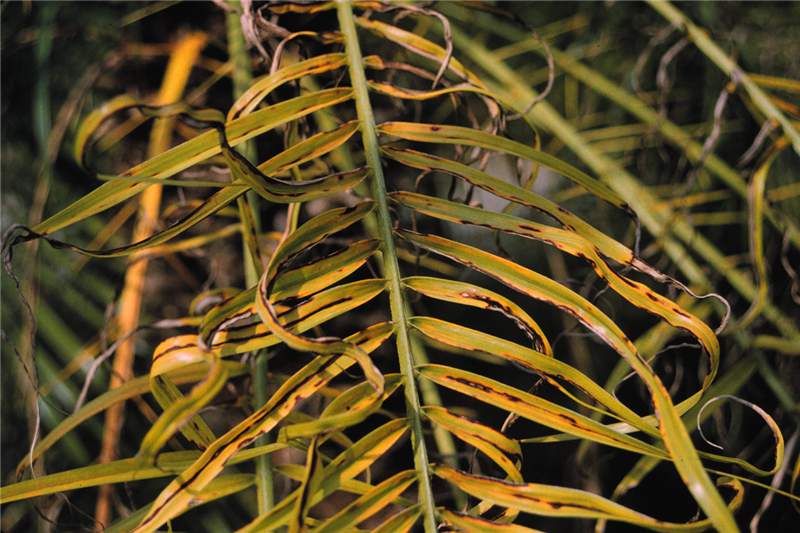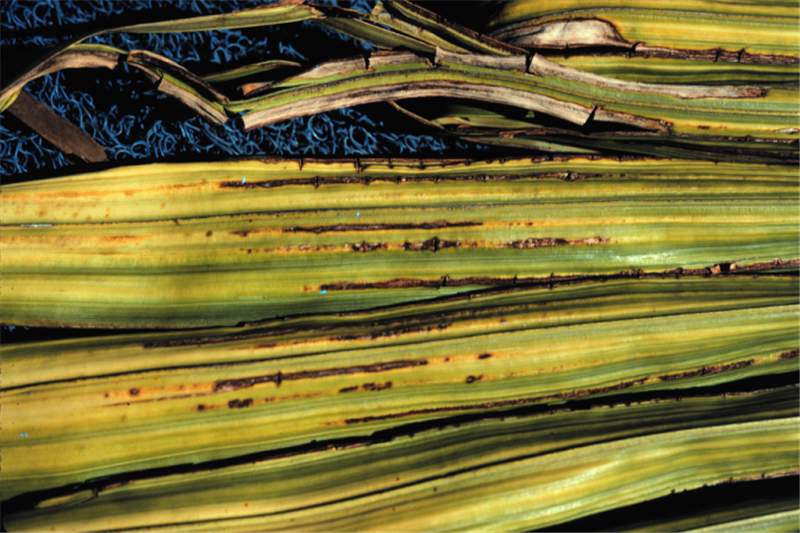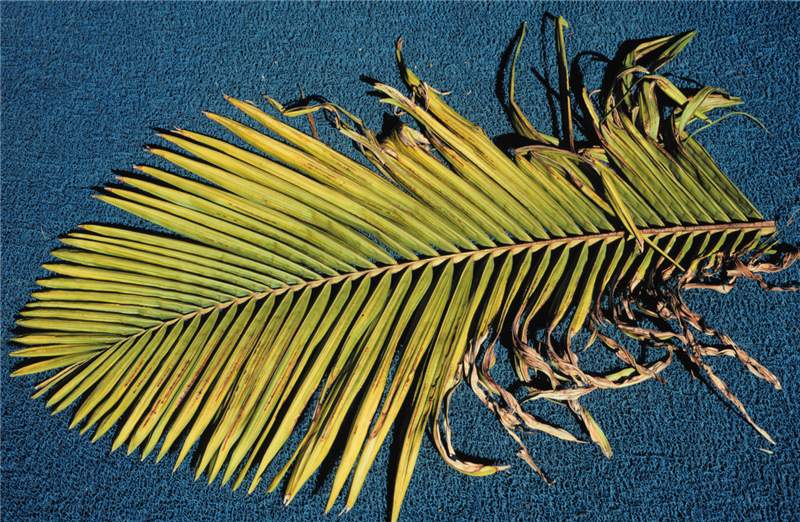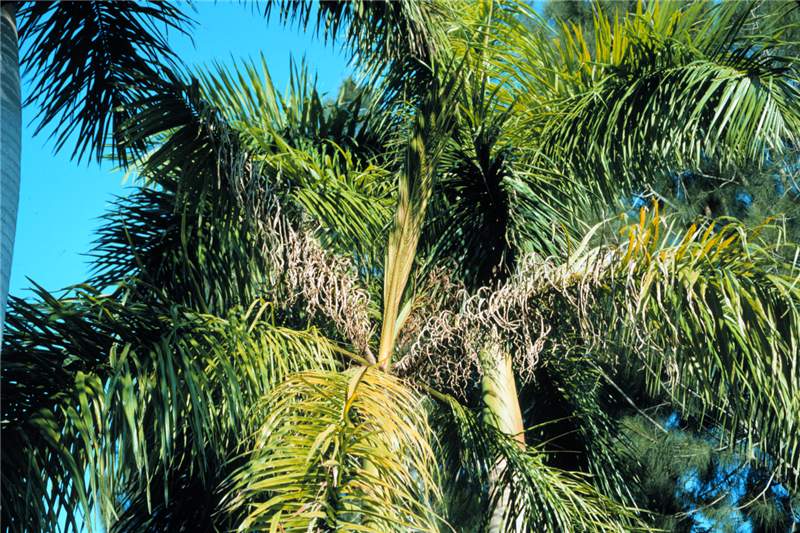Manganese Deficiency
|
Figure 2. Close-up of Mn-deficient leaf of Phoenix roebelenii showing longitudinal necrotic streaking. Photo by T.K. Broschat.
|
|
Figure 1. Close-up of leaflets of Mn-deficient Archontophoenix alexandrae leaf. Note the longitudinal necrotic streaking. Photo by T.K. Broschat.
|
|
Figure 4. Manganese deficiency symptoms on Phoenix roebelenii. Photo by T.K. Broschat.
|
|
Figure 3. Mangenese-deficient new leaf of Rhapis excelsa. Photo by T.K. Broschat.
|
|
Figure 6. Manganese-deficient new leaf of Archontophoenix alexandrae. Note that symptoms are most severe towards the leaf base and least so towards the tip. Photo by T.K. Broschat.
|
|
Figure 5. Manganese deficiency on Roystonea regia. Note that frizzling is most severe towards the base of the leaves. Photo by T.K. Broschat.
|
|
Figure 8. Severe Mn deficiency symptoms on Syagrus romanzoffiana with only necrotic petiole stubs emerging. Photo by T.K. Broschat.
|
|
Figure 7. Severe Mn deficiency symptoms on Cocos nucifera. Photo by T.K. Broschat.
|
Symptoms
The newest leaves of manganese (Mn)-deficient palms emerge chloroticchlorotic:
see chlorosis
with interveinal necroticnecrotic:
see necrosis
streaks (Figs. 1-3). As the deficiency progresses, newly emerging leaflets appear necroticnecrotic:
see necrosis
and withered on all but basalbasal:
closest to the point of attachment
portions of the leaflets. This withering results in a curling of the leaflets about the rachisrachis:
the axis of a leaf beyond the petiole or an extension of the petiole into the leaf blade
giving the leaf a frizzled appearance ("frizzletop") (Figs. 4 and 5). Within a single leaf, Mn deficiency symptoms are concentrated at the base of the leaf and are less severe or nonexistent towards the tip (Fig. 6). On new leaves of Mn-deficient Cocos nucifera, necroticnecrotic:
see necrosis
leafletleaflet:
divisions of pinnate leaves
tips fall off and the leaf has a singed appearance (Fig. 7). In severely Mn-deficient palms, growth stops and newly emerging leaves consist solely of necroticnecrotic:
see necrosis
petiole stubs (Fig. 8). Meristemmeristem:
the growing region of a plant, a special area of undifferentiated cells wherein new cells and organs are developed
death often follows.
May be confused with
Late stage potassium deficiency symptoms are virtually indistinguishable from those of Mn deficiency at a distance and close examination is required to look for the interveinal streaking and basalbasal:
closest to the point of attachment
(vs distaldistal:
farthest from the point of attachment
) symptom distribution that are characteristic of Mn deficiency.
Iron deficiency appears similar from a distance and close examination of new leaves for the presence of interveinal necroticnecrotic:
see necrosis
streaking is required to distinguish between the two disorders.
In Cocos nucifera, Mn deficiency causes the production of small new leaves that appear to have the distaldistal:
farthest from the point of attachment
portions of the leaflets burned off. In this species, it is very similar to the truncated leaf tip symptoms caused by boron deficiency.
Cause
Manganese deficiency is caused by insufficient Mn in the soil or by high soil pH, which greatly reduces Mn availability. In soils where Mn is marginally sufficient, cold soil temperatures may cause temporary Mn deficiency by reducing root activity levels. This is particularly common on Cocos nucifera in Florida. Composted sewage sludge and manure products have also been shown to strongly bind Mn when used as fertilizers or as soil amendments for palms.
Occurrence
Manganese deficiency is very common on alkaline soils, but can occur in containers if drainage is poor or soil temperatures are cool. Most species of palms can be affected, but Syagrus romanzoffiana, Acoelorrhaphe wrightii, Phoenix roebelenii, and Elaeis guineensis are particularly susceptible.
Additional comments
Although symptoms of Mn deficiency such as interveinal necroticnecrotic:
see necrosis
streaking and leafletleaflet:
divisions of pinnate leaves
frizzling at the basalbasal:
closest to the point of attachment
ends of leaves occur when the new leaves first emerge, these symptoms remain with these leaves throughout their lives and may be observed on mid-canopy or lower leaves.










